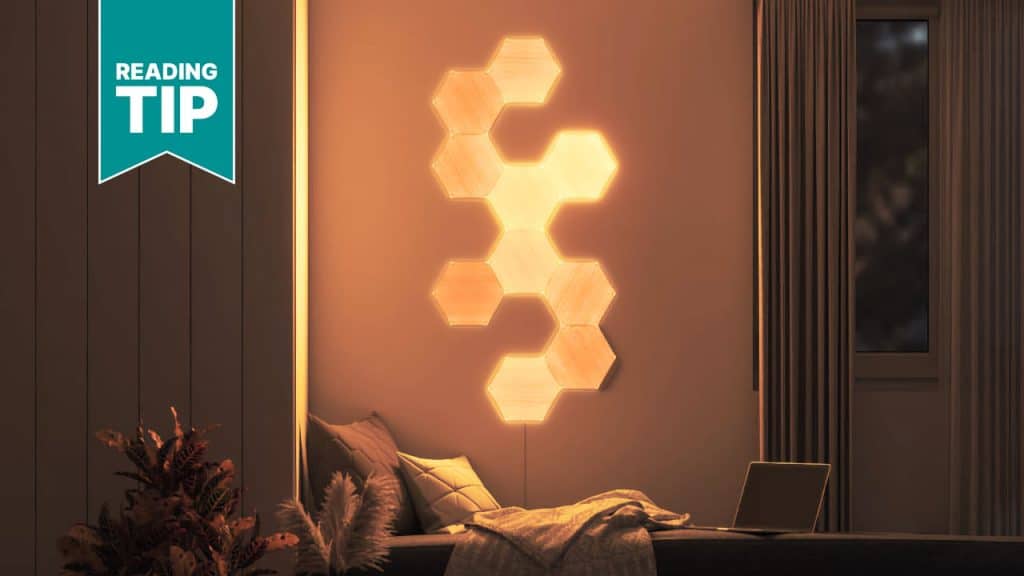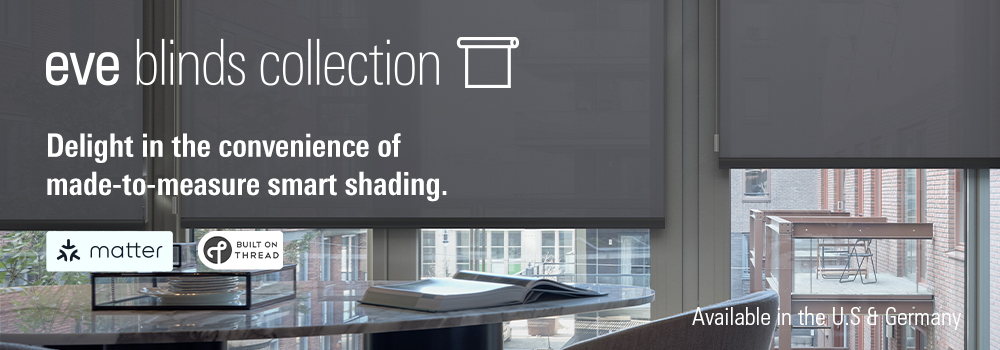
An interview with Gimmy Chu, co-founder and CEO of Nanoleaf (link), on the upcoming smart home standard Matter. What it means for the industry and his company in particular. The specialist in decorative LED lighting has been committed to the standard from the beginning and wants to be among the first to launch products.
Zur deutschen Übersetzung hier entlang.
Why did Nanoleaf commit to Matter so early?
Gimmy Chu: We strive to be the leaders of innovation and new technology when it comes to smart lighting. We are the first smart lighting company to introduce Thread products to the market. When Matter was first announced at the end of 2019, we knew right away we needed to be at the forefront of this new protocol. We believe that smart home needs to be a much more accessible and universal experience in order to truly become “smart”. Matter means we can build support for one language to control our products and focus much more of our time innovating on problems that haven’t been solved yet.
What advantages do you expect from Matter for your company?
Chu: Thread and Matter will create a strong foundation for product companies to enable connectivity in a reliable manner. The standard will enable companies like us to have more time and resources to focus on building innovative product experiences. Rather than be bogged down by trying to enable interoperability with platforms that were not previously standardized (i.e. HomeKit, Google Home, Alexa).
Thread creates a reliable and scalable networking protocol to add more products onto without overcrowding your home Wi-Fi network. We’ve been working closely with Apple, Google, Amazon and Samsung to ensure interoperability with their standards, and it will also work with anyone else that chooses to build on Matter. Also, the major tech companies have already committed to ensuring that Thread is the smart home protocol that they will be focused on going forward for products like lighting. Therefore, Nanoleaf community members will be able to purchase products that are future proof.
Critics say that Thread has not yet proven itself in complex environments with many different manufacturers …
Chu: For most smart home applications, Thread is the networking protocol that makes a lot of sense to replace Zigbee and Bluetooth. There are still situations in which Wi-Fi makes sense (i.e. home computing, cell phones, cameras) – anything that requires large data bandwidth. However, for all products that have low data throughput, Thread enables much longer range and is extremely low power which allows battery powered products to last much longer.
To put it frankly, all new innovations and products carry technical risk, but that’s a risk that companies have to make in order to make strides towards improvements and new developments. Having said that, Thread has years of development from Google Nest. Apple has now front-run Thread development with years of in market experience with HomeKit as an early application layer paving the way for Matter.
Thread 1.3.0 includes a number of features, much of which is built into the Border Router, of which we’ve written about in a White paper (link). In standardizing the technology, it actually represents adoption of many already-deployed solutions in the technology landscape. The value proposition of IP in a low power network is definitely worth the diminishing technical risks.
“The value proposition of IP in a low-power network is definitely worth the diminishing technical risks.“
Nanoleaf is primarily known for its light panels and is extremely popular among gamers. Will Matter change anything in terms of product philosophy and orientation? Are you also thinking about more functional lighting?
Chu: Right now, smart home revolves around products that you can control with your smartphone. We see the future of smart homes evolving into intelligence and automation, where all of your devices will work seamlessly together without needing your phone or even voice commands. Everything will just automatically work as you need it to.
From us, you can expect to see more work with sensors. Shifting from the focus on automation through smartphones to a more true version of automation that sits in the background while consumers go about their daily routines. We will continue creating products that fall under “smart decor” and continue pushing the creative boundaries on that category while developing more on the automation and functional lighting side.
“From us, you can expect to see more work with sensors.”
You have announced that some of your products will serve as border routers for the Thread radio protocol. Which ones are these, and will this work across manufacturers?
Chu: The current specification of the Thread standard (1.3.0) already envisages this for Matter. Our Shapes, Elements and Lines products currently act as Thread Border Routers for Thread-enabled devices and will be updated to Thread 1.3.
Some buyers of the Essentials products with Thread had hoped for a software update that would enable Matter support on the products. That’s not going to happen now. Why?
Chu: Current Essentials won’t support Matter, unfortunately. We plan to release a new version of Essentials that is Matter-compatible alongside the Matter launch. The way the Matter spec was created, it had higher than expected requirements for hardware and will need some hardware upgrades in order to work. This will not negatively affect our customers who currently have Essentials products because the integrations they already love will work the same once Matter launches.
In saying this, Matter is less visible to the end customer, what’s important is whether the products will support the platforms like Apple, Google and Alexa. We’ve built our products to support all major platforms, so our customers will still be able to seamlessly use everything without being affected by the change. The move to Matter will more so benefit future users who prefer different smart home ecosystems or those newer to smart home who have yet to choose an ecosystem.
The beauty of Thread is that it’s built around the Internet Protocol, which allows us to use HomeKit, Matter, or even our own custom features all within the same network. This was never possible before with low powered mesh technology. This means that as you build out your Thread network using new Matter products from Nanoleaf or from others, the existing Essentials products you have today will continue to benefit from that enhanced Thread mesh reliability.
“Matter had higher than expected requirements for hardware and will need some hardware upgrades in order to work.”
Will there be a way to connect the Essentials to Matter-enabled systems anyway, such as via a Border Router that detects and passes the lights?
Chu: The Essentials already work with many home automation systems through cloud-to-cloud connections when a user has a Nanoleaf Thread Border Router (including Nanoleaf Shapes, Elements or Lines). If you are referring to Hue’s approach to Matter, which exposes Zigbee devices through a Matter-enabled bridge. We don’t have any specific details to share about an approach like this at this time. Essentials products today will continue to function as they do. Essentials products in the future that work with Matter will not require a hub that does Matter bridging – only a Border Router that supports Thread 1.3.0.
Which models from the current range will be compatible with the new standard when Matter launches?
Chu: Our new Essentials range will be Matter-compatible once the standard is available. All of our other Wi-Fi products including Lines, Elements, Shapes, Canvas and the original Light Panels work with the major platforms already (Apple, Google, Alexa and Samsung SmartThings) so they will technically still be able to work with Matter-enabled devices. We will continue to monitor new use cases that are exclusively enabled through Matter and weigh them with value added benefits for users to determine where we will focus our development efforts. Our products will continue to interoperate with major platforms well into the future.
Does this mean for Wi-Fi products basically the same as for first generation Essentials: they will continue to function, but there won’t necessarily be a software update that connects them to more smart home systems via Matter?
That’s correct. We’ll continue to monitor the use-cases and technical feasibility of upgrading deployed products to Matter. But note that Essentials products are more constrained than our Smarter Decor products.
“Our existing products will continue to interoperate with major platforms well into the future.”
While other manufacturers have already made announcements about upcoming Matter products, you are more cautious. Can we expect any new products at the start of the standard?
Chu: Yes, we plan to launch a number of new products that will work with Matter as soon as the new standard is available later this year. Our team has been working incredibly hard behind the scenes to make sure the products are ready alongside the launch, and we have an entire range of exciting new things to announce later this year.
What challenges have been encountered so far in the development process?
Most new standards take many years to bring from inception to launch. Matter, even with its delays and despite the pandemic, has moved exceptionally quickly through development. Matter has taken a unique approach, with a shared SDK being developed in parallel to the main specification. The benefits to this far outweigh the drawbacks, although learning and working through the drawbacks, remotely, and with many unique and diverse partners, has been quite a challenge.
We’ve also said this many times, but we see Matter as a new foundation, not the final destination. All the innovation that will make the smart home of the future is still to come and will be built on top of this new foundation. All the reasons to build Matter center around ensuring the basic connectivity and “plumbing” of the smart home is unified. In a sense, this is the last mile of our long marathon of building connectivity.
At our core, we love to work on innovative new things that will bring users joy. Good connectivity isn’t really a joy-bringer, but bad connectivity is definitely a kill-joy; which is why our team believes in the importance of focusing our energy on Matter. So that we can create that strong foundation, which is vital for allowing us to continue developing those experiences that bring joy to our community of users.
Mr. Chu, thank you very much for this interview.
Share this information:


